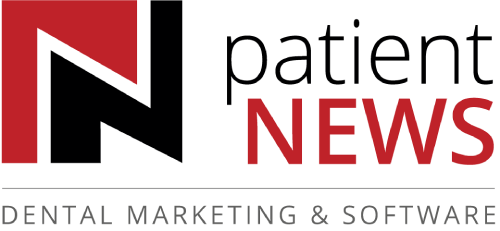Great Opportunities Exist (Right Now!) For Small & Emerging Group Practices

Your dental market is resilient & its long-term outlook is positive
The past 6-months has been one of great uncertainty and unprecedented change, particularly within the dental industry. Even today, the industry continues to hold its collective breath. Recovery is slowing down for average practices with production around 75% of pre-COVID levels (per the ADA, although Patient NEWS clients have rebounded strongly with production back to the 100% range in the summer, likely due to our marketing/patient-centric client focus). Without dental services being declared essential by all levels of government, many dental practices continue to be at risk of future closings.
For mergers and acquisitions (M&As), this uncertainty has forced many large group practices and DSOs to take a more-cautious approach when pursuing larger transactions or to halt activity altogether. But as the old saying goes, while the cat’s away, the mice will play, and the void left by the lack of larger deals presents great opportunities for smaller, well-funded emerging groups.
Jeromy Dixson, CEO at Dental Capital Partners & The DSO Project, recently had this to say about the current climate: “The impact of general economic uncertainty, a presidential election in November, and variable conditions at the state level have created short-term valuation uncertainty. The result has been a slowed market for larger DSO transactions in many cases. Conversely, the market for single or small group acquisitions by existing and well-capitalized (not overleveraged) DSOs is experiencing heightened activity and interest.”
The dental market has proven to be resilient. The long-term outlook is extremely positive.
Dr. Anthony Stefanou, Founder and Managing Partner of Connect-the-Dents DMD, CBI, M&A, and DSO advisor, and Business Intermediary sees it this way: “While these are challenging times, dental practices will thrive and prosper in the next few years. The long-term value of a dental patient is higher than it has ever been. There will be a plethora of practice opportunities available as more dentists will retire in the next 2-5 years than ever before, AND, even more importantly, many practices currently in their ‘peak years’ have dentist owners who still love, and want, to do clinical dentistry but are not in love with providing administrative services, especially in this environment.”
But that is not to say that the initial transition won’t be a little rocky. I have worked with several emerging DSOs, from a communications and marketing perspective, who have taken advantage of the current market by acquiring several affiliates in a very short period. It’s an exciting time and working with these groups is very rewarding, but it’s important to remember that without the proper internal resources and infrastructure in place, the details of transitioning these practices can become overwhelming when not handled systematically and efficiently.
Setting aside HR, collections, leasing, existing supplier contracts, etc. (the list is extensive), the existing owner may have let aspects of their practice lapse that don’t immediately present themselves while conducting due diligence.
Dr. Stefanou recommends that, “In addition to continuing to be more efficient in reducing overhead/expenses with current affiliates, emerging DSOs should just as equally prioritize the importance of optimizing ways to differentiate themselves (overall and per affiliate) and improve communications with current patients and in obtaining new patients, especially in year one post-acquisition. This is best accomplished by working with experts with proven track records working with dental practices.”
Here are the top 7 things to consider when transitioning a new acquisition:
- Mail a printed letter to existing patients, announcing the new ownership structure.
Effective communications should include both mail and email campaigns. Establish the communication cadence pre-, during, and post-transaction to ensure the information reaches patients on time – with increased touchpoints at this critical time. Mail reaches 100% of your patients’ households, and you’ll want to support the news and information with a separate email cadence. A smooth transition will be strengthened with assurance from the outgoing owner, so you want positive messaging from both the outgoing owners and new management. Communicate with the patients’ perspective top-of-mind including images of current and new team members. People inherently don’t like change, so it’s important to reassure them that they will still experience the same great care (or better) than they’ve come to expect from the practice, and when patients know that great team members will stay with the new owners, it will add further confidence and trust. - Conduct an audit of existing marketing.
Take a look at the dental patient Journey and complete a gap analysis to understand the missing components for potential or newly acquired practices. What are the pre-existing contracts in place and when do they conclude? What is your commitment to these contracts now that the practice is under new ownership? What were the previous owners doing to attract new patients and to keep existing patients? What is working and what isn’t – what was the return on investment if any, for any existing marketing campaigns. - Conduct a detailed assessment of the affiliate’s online presence.
Is the existing website up to date, optimized for mobile use, and secure? Will it require a brand refresh, team and service updates? Are there any PPC/Google AdWords campaigns currently running? Are there existing Facebook, Instagram, LinkedIn, Google My Business, or Twitter sites? Are they up to date and active with consistent, regular posts? What is their review score on Google, and are they attracting positive, new reviews week-over-week? Be sure to get administrative logins for each of these pages as soon as possible and lock out anyone not associated with the team moving forward. - Complete a detailed analysis of the
market area.
This may have already been conducted as part of your due diligence, but now you’ll want to revisit the findings from a marketing perspective. Where is does the current market share reside, where are the most valuable patients and how does this relate to your growth plans? How many other dental providers are in the area? Are they impacting practice growth? What special offers do they promote and how can you differentiate? What does the area look like from a demographic/socioeconomic standpoint? What messaging will attract your target audience – should you promote based on price-related offers, convenience, value, or the services offered? Define your top three marketable attributes – your competitive advantages – and make sure they are designed to the area demographic to attract. - Observe the first new-patient experience.
What percentage of inbound calls are answered live? How effective is the team at scheduling new patients? How warm and inviting are the on the phone? Is there ongoing training/coaching to assist in new patient conversion? How will they handle questions about the new ownership, new pricing, new services, new providers? Are they prepared with positive patient-focused scripts to help alleviate the fear of change with existing patients? The front-desk team can make or break a new acquisition, so you’ll want to pay special attention to how they react and communicate this change to your patients. - Your brand and ongoing patient communications.
New ownership/management could mean a new brand, or you may wish to consider the value and positive equity of the existing brand, and that needs to be incorporated into how you will communicate with patients. What brand message do patients need to know – and share? Patient newsletters by email and mail, review requests, appointment reminders? Is there a membership plan that will convert non-insured patients to higher value patients? Can you generate more referrals from existing top-value patients? How will you tackle non-scheduled, overdue, lapsing, and danger patients? - Consider using a full-service marketing agency that you trust to handle the details.
As you continue to grow, the number of companies you will have to deal with to handle various parts of your marketing for each affiliate could be overwhelming. Managing various brands, stakeholders, and programs for each affiliate is complicated. I’ve had the pleasure of working with dentist owners and operations managers to assist with these components on a location by location basis. It’s easy for us to support you; we have the manpower and the expertise to guide you – and Practice ZEBRA, ZEBRA Enterprise dental software that includes reporting at the solo, region, and group level to give you clear visibility of group results.
Marketing campaigns work best as a cohesive whole – not as different, isolated initiatives – and working with an experienced company like Patient NEWS, and me, will take the burden off you and provide you with leading-edge, exciting, informative programs and not a collection of silos that are mismatched, inconsistent, and that don’t support each other.
So, although today’s environment presents its own set of challenges, the climate is open for those who are well-positioned to see the potential before them. Call me today for a free consultation.
Share:
Stay In The Know!
Join 20,000 dental colleagues today!
Subscribe to our weekly updates, and/or request a free brochure and product samples.



